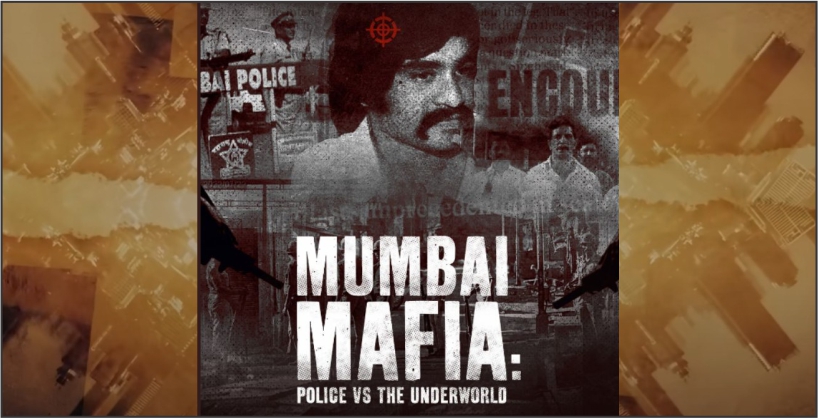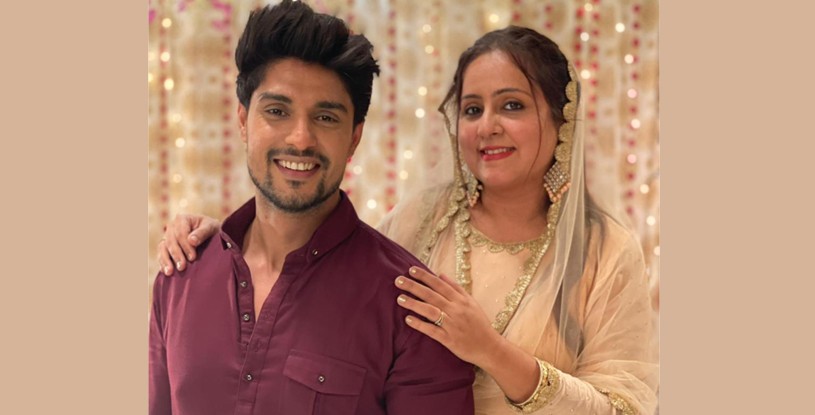Review of Mumbai Mafia Police vs. The Underworld
Well-known story skillfully adopts a fresh perspective.
The documentary Mumbai Mafia tells the tale of Dawood Ibrahim’s ascent, his perplexing orchestration of a bizarre crime organisation, and the Mumbai Police’s defensive tactics against it. Although Ibrahim’s younger years are skipped over, it’s evident that this time around, the focus is on a new portion of the story that spans around three decades. The story line and organisation are both quite straightforward. The late A.A. Khan, the man who started the ATS (Anti-Terror Squad), had a viewpoint. Ibrahim’s ascent, Khan’s creation of encounter teams, the Mumbai riots that followed, and the subsequent “throwing of the kitchen sink” at organised crime are all parts of a narrative that we have seen, read, or otherwise ingested in some way as part of our daily diets.
The focus of this program, however, is on the police, who may be just as nasty as the criminals they were designed to catch. Pradeep Sharma hasn’t precisely been a loner, but he speaks in part about his life spent hunting and perhaps even committing crimes. Blink and you might Miss Sharma carefully attending to his beloved puppy at one point. It’s one of those uncommon glimpses into his private life that humanises a person with such a hard exterior that it’s terrifying to even have to question their frailty. Sharma and company count their “kills” casually, which works well because it prevents sensationalization. Evidently, to them, all men—living and breathing, cowardly or guilty—are just figures.
First Part:
The first party will bring you back to 1990’s when, the city of Mumbai dominated by the dangerous Mafias. There is introduction to the police officers of Mumbai in the first part of the movie. These officers discuss how earlier police was not as powerful as the mafias. The view points of the Ex-Mafias, Journalists, and police are projected through this documentary on Netflix India.
Second Part:
For the elimination of gangsters and all such under world people from Mumbai, a ‘special crime branch’ was established. This took place after the devastating Bombing incidents that took place after 1993. Because they killed these accused criminals, the “encounter experts” of this special crime section were considered as champion by the public and media. However, the documentary strikes a balance by presenting the viewpoints of journalists, other police officers, and citizens who questioned these police confrontations.
This documentary on Netflix India exhibits the horrible fire fight at Lokhandwala, the documentary wonderfully depicts it. Hussain Zaidi, an author and former investigative journalist, presents his extensive study on the conflict between the Mumbai police and the mafia.
Puja Changoiwala, a journalist and author, highlights the opposing viewpoint of the Mumbai police’s gangster encounters. The Times Magazine writer Alex Perry’s article on Pradeep Sharma sparked debate over the Mumbai police and its interactions.
Cast and Crew
Cast
- Former Mumbai Police RavindraAngre
- Journalist Puja Changoiwala
- Writer Minty Tejpal
- Journalist Minty Tejpal
- Crime Writer Puja Changoiwala
- Former Police Commissioner A.A. Khan
- Dawood’s Former NeighborFeroz Sayed
- Former Mumbai Police Pradeep Sharma
- former assistant director CBI Rupin Sharma
- Former D-Company Shyam Kishore
- Gulshan Kumar
- Former Time Magazine Correspondent Alex Perry
Crew
- Director: Raaghav Dar
- Director: Francis Longhurst
- Editor: Nic Zimmermann
The Precise Review:
This documentary on Netflix India is 1 hour 27 minutes long produced by Morgan Matthews and Sophie Jones. The Directors are Raaghav Dar and Francis Longhurst. This show was realesed on January 6th, 2023 on Netflix. It is present in 3 languages English, Hindi, Tamil and Telugu.
Follows the conflict between police and organised crime that raged through the 1990s on the streets of Mumbai as it affected the city’s destiny. On one side, there is D-Company, a notorious gang that controls the city with a bulldog grip through extortion, racketeering, drugs, and ultimately terrorism.
The “Encounter Specialists,” a group of intrepid police officers with moustaches tasked with regaining control of the streets, are on the other. Visceral interviews with the cops at the centre of the conflict will drive the police narrative in Mumbai Mafia: Police vs. The Underworld, unravelling the psychology behind their actions as the situation on the streets worsens.
With “Mumbai Mafia: Police vs. the Underworld,” you’ll learn about the town’s links to terrorism. It uses television footage, reporting, and a series of interviews with investigative writers, police officers, and mafia members to piece together a convincing narrative that can be traced back to the early 1990s.
The elusive kingpin Dawood Ibrahim is the subject of the first part of the movie. He had a vice-like grasp on Bombay in the 1980s and the early 1990s. He was in charge of the notorious D-Company syndicate. They had a hand in everything, including contract assassinations, extortion, smuggling, gambling, and prostitution. Their impact was so extensive that the hafta permeated the entertainment industry, Bollywood, and cricket.
Executions and shootouts were frequent occurrences, with gang conflict and rivalry accounting for a disproportionate number of fatalities. Around this time, the police made a significant move. Surveillance of Dawood’s assistants was increased under the direction of then Additional Commissioner AA Khan. To find and capture two of his right-hand men, raids were conducted. The soldiers refused to give up, which resulted in a gunfight in broad daylight at the Lokhandwala Complex in 1991. Seven gang members were killed in the aftermath, while other police officers and bystanders were hurt.
The term “encounter” originated in the Indian setting as a result of this brutal attempt to cut off the underworld’s wings.
Overnight, encounter specialists- eager officers who took great delight in putting down criminals for the good of society – became important.
Their methods of administering , justice were similar to those of the crowd, which they intended to control.
In the heyday of a “eye for an eye ” culture like this, the public and media kept tabs on each officer’s fatal shootings, they were praised for their courage, and movies were based on their inspiring stories.
The fact that the aforementioned encounters were extrajudicial killings persisted.
The Police description of what happened didn’t line up with what witnesses and family members reported. Neither a shootcut nor an effect to flee occurred. Police squads picked up gang members from their houses, took place them to a remote location, and then shot them. The police was taking issues into its own hands rather than properly carrying out its duty as law enforcement. When policemen Pradeep Sharma and Ravindra Angre make statements such, as ” Woh criminals hi they na”?
“Us time kisi ne kuch nahi bola”
Setting such a flawed standard of good and wrong as one’s own while working as a police officer is extremely risky. There is no basis for justification in this situation, even when we take into account the impact the Bombay underworld had on the legal system. AA Khan made the decision to voluntarily retire in opposition to the force’s blatant, oppressive tactics. Time Magazine’s Alex Perry makes a comparison between Bombay in the 1990s and Mumbai in the 2000s in terms of gang-related shootings. Apparently, with the introduction of encounter killings, it decreased from two to two every month.
Mumbai Mafia performs well to collect different viewpoints from all across, creating a colourful image. It criticises both the law enforcement’s habitual extrajudicial killings and the merciless mafia equally. It is natural that there is little representation from the D-Company or individuals with close ties to Dawood (a former associate and two of the don’s old Bombay neighbours). The introduction to the organised crime in the city should have been handled better by the producers.
How did Dawood become so strong? Whom did he inherit from?
Haji Mastan, Varadarajan Mudaliar, and Karim Lala—three pillars of the milieu—are not mentioned.
Even if their impact started to wane in the 1980s, they were still present.
Neither is Chhota Rajan, a previous significant assistant of Dawood, mentioned in the interview.
They spend less time on the mafia in order to concentrate on the false encounters (an entity central to the telling of this narrative).
The best option would have been to take an extra half hour to tell a more in-depth story.
Irrespective of so many pitfalls that have occurred in this documentary on Netflix India. This movie is still a worth watch! It’s disturbing how open the encounter specialists are. Knowing such encounters take place is one thing, but hearing it first hand is quite another. Pradeep Sharma’s remarks, made in jest, criticises the whole police force. “When crime escalates, you are given free rein. When it is brought under control, there is no need for encounter cops. So, they are removed from the system. No one will be as frank about this as I’m being with you,” he claims. Those unsettling phrases refer to supervisors who allowed questionable activities to thrive before looking for scapegoats when the external noise became unbearable.
Hence, for all those who’re interested in watching crime documentaries or some related to it, the shows that are serious enough, or the shows that project history, they must watch this documentary on Netflix India. It is definitely a great size of not just serious thrill but also historical revelations!
What we loved?
The creators went a step further and enquire into the underlying moral problem that encounter experts face on a personal level. For instance, the officers discuss how they come to terms with killing people despite having spent their entire lives being taught to view it as a sin.
To provide an engaging and in-depth overview of the events the documentary covers, media footage, photographs, and journalistic viewpoints are included.
What could have improved?
The documentary occasionally provides insufficient details, leaving the story with huge gaps. It appears that there are unfinished features spread across the environment.
While there are plenty journalists covering the events in the documentary, viewers are still left wanting an expert interpretation of the occurrences. The narrative is supported by a few ideas and opinions here and there, but it doesn’t seem like enough.
Using first-person accounts and archive material, directors Francis Longhurst and Raaghav Dar tell it like it is to assemble a gripping documentary. The 80s and 90s atmosphere is brought to life by the fascinating background music (Rishi Rich) and gritty, grainy re-dramatizations of some scenes. However, in several instances, the documentary spreads itself too thin in an effort to cover too many topics, leaving some strands hanging and unbalanced the narrative. The underbelly and underworld of Mumbai have long attracted filmmakers to the subject, and with “Mumbai Mafia – Police vs. the Underworld,” the producers succeed in revealing some of the chilling and captivating tales behind “the country’s hub of organised crime.”
Check out this video on the YouTube Channel AllGood in order to obtain a precise review! This documentary on Netflix Indiais a projection of the criminal scenario through present in Mumbai. This show has obtained various reactions. Check out AllGood’s response to this show so that you can get to know if this documentary is worth your time.
FINAL VERDICT:
In general, you should view the documentary Mumbai Mafia: Police vs. The Underworld. It’s not your normal tale of the good guys versus the bad guys. It talks about how terrible guys are defined differently over time. Defenders may occasionally turn against their protectors. The horrific events and experiences that have occurred during the 1990s as a result of syndicates, gang warfare, shootouts between police and criminals, organised crime, terrorism, and other factors cannot be covered in eighty-seven minutes. After watching the documentary, it is a great attempt to get viewers to reflect and do more research.
It is an absorbing, compelling, and educational documentary that depicts the terrible history of Bombay, later Mumbai, as well as the steps that were necessary for the city to transform into one that is now home to thousands of people with hopes and hope.
What Parents Should Be Aware Of
Parents should be aware that the 2022 true-crime documentary Mumbai Mafia: Police vs. the Underworld details the conflicts between diligent police and murderous gangster-terrorists in Mumbai during the 1980s and 1990s. Expect to see a good deal of old news video of riots, police shootings of gangsters, and dead bodies. Talk about gang members breaking into a house and raping a woman. imply the cutting of a man’s fingers. images of bloody gangsters who have died. using cigarettes. getting drunk in bars. includes subtitles in both English and Hindi.
Conclusion
If you’re an international viewer and you are interested in finding out what happened in Mumbai, then this we series is definitely for you! This is an interesting documentary that portrays how the city dealt with the dangerous gangsters of Mumbai during the terror attacks in the year 1993.
Mumbai Mafia: Police vs. The Underworld is a retelling of their past trauma when some survivors will reflect on how they survived the terrifying terrorist attacks. It is especially relevant to Indians, particularly Mumbaikars (People who live in Mumbai).
Additionally, as the events are recounted, numerous additional survivors who saw the terror attacks and shootouts firsthand will relive their suffering. This documentary has introduced viewers to a fresh side of the story: that police officers were using their authority to commit crimes while pretending to be safeguarding the public.
The true-crime documentary on Netflix India MUMBAI MAFIA: POLICE VS THE UNDERWORLD explores the conflicts between the police and criminals in Mumbai, mainly in the 1980s and 1990s. The police were powerless to stop Mumbai’s criminal masters and their mafia lieutenants from wreaking havoc by operating the drug and prostitute trades, robbing people, and breaking into their homes. The most notorious gang, “D-Company,” appeared to have complete freedom to act however they pleased. Enter the “encounter experts,” an elite group of police officers prepared to use all measures necessary to bring these thugs to justice. The leaders of the criminal underworld turned to increasingly drastic measures of vengeance, including bombing the Mumbai Stock Exchange, as the encounter specialists’ strategies started to bear fruit. The encounter experts were unfazed, and their vigilante tactics continued to be effective; as a result, they rose to fame on their own and were the subject of Bollywood movies. But as time went on, a lot of these policemen came under scrutiny, and some of them were even imprisoned for their dubious practices.
Watch Mumbai Mafia Police vs The Underworld. Documentary on Netflix India! Here is the link:
Other Netflix programmes, such as Mumbai Mafia
The audience has embraced the new offerings of several popular crime programmes on Netflix. The OTT platform has attracted a lot of customers who are interested in drama, action, and thriller-related programming, whether they are fictional or non-fiction. The Emmys and other international venues have praised recent releases like Delhi Crime. On the other hand, global popularity has grown for documentaries like Indian Predator Series, Burari Death Case, Talwar Case, and others.
Written By: Nehal Sharma

















